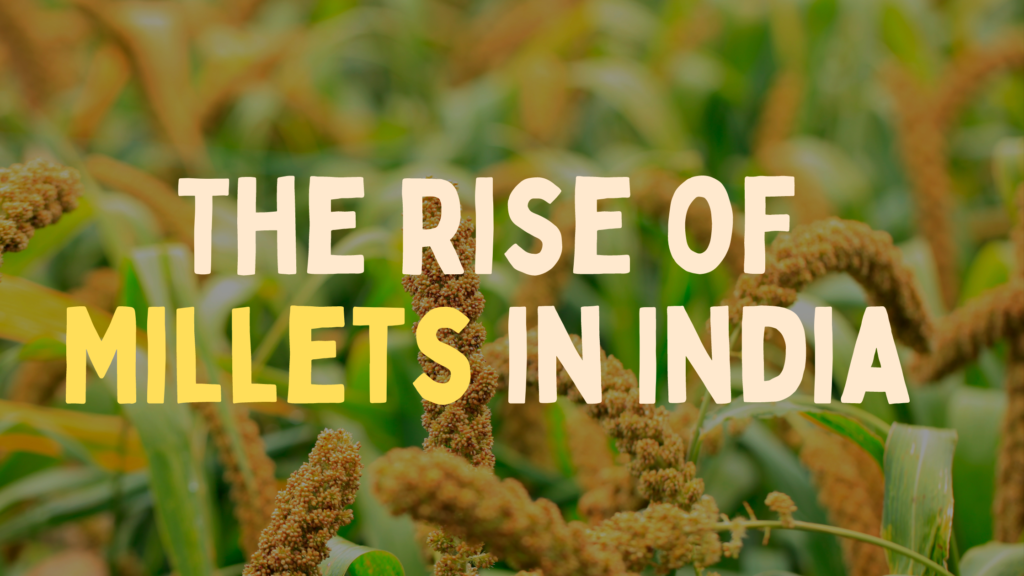
Imagine a bustling marketplace in a small Indian village. Farmers proudly display a vibrant array of grains – not just the usual rice and wheat, but a dazzling spectrum of tiny, nutrient-rich seeds. This scene, once a staple of Indian agriculture, is making a comeback thanks to the burgeoning "Millet Revolution."
The millet revolution in India is a movement that’s not just about rediscovering a forgotten food source. It’s a multi-pronged approach to tackling some of the biggest challenges facing the country – from public health and food security to environmental sustainability and rural development.
Millets: The Ancient Grains Making a Modern Comeback
Millets are a diverse group of small-seeded cereals that have been cultivated for millennia. In India, their history stretches back thousands of years, forming a vital part of traditional diets. However, the Green Revolution of the 1960s, with its focus on high-yielding varieties of rice and wheat, led to a decline in millet production and consumption.
But the tide is turning. Today, millets are being hailed as “nutricereals” due to their impressive nutritional profile. They are naturally gluten-free and packed with protein, fiber, vitamins, and minerals. Research suggests that millets can help regulate blood sugar levels, improve gut health, and even reduce the risk of chronic diseases.
Why Millets Matter for India
The benefits of millets extend far beyond the dinner plate. Here’s why they’re becoming a crucial part of India’s agricultural future:
- Climate Champions: Unlike water-guzzling rice and wheat, millets thrive in drier regions and require significantly less water to grow. A study by the International Crops Research Institute for the Semi-Arid Tropics (ICRISAT) revealed that finger millet, a popular variety in India, uses just 27% of the water needed to cultivate rice. This makes them ideal for mitigating the effects of climate change and water scarcity, major concerns for India’s agricultural sector.
- Sustainable Superstars: Millets are naturally resistant to pests and diseases, reducing the need for harmful pesticides and promoting a more eco-friendly farming approach. Additionally, their deep root systems help to improve soil health and prevent erosion.
- Empowering Farmers: Millets are traditionally cultivated by small and marginal farmers, particularly in rainfed areas. The millet revolution creates a valuable opportunity for these farmers to improve their livelihoods. With increased demand for millets, farmers can command fairer prices for their crops, leading to greater economic security and empowerment in rural communities.
Challenges and the Road Ahead
Despite the promise it holds, the millet revolution faces some hurdles. Public perception still needs to shift. For many, millets are associated with a bygone era and a less prosperous past. Raising awareness about their nutritional benefits and versatility in modern cuisine is crucial.
Developing a robust supply chain infrastructure for millets is another challenge. Currently, processing and marketing facilities are limited, making it difficult for farmers to get their produce to wider markets. Additionally, creating innovative millet-based products that cater to modern consumer preferences is essential for long-term success.
India Leads the Way: The International Year of Millets
In a significant development, the United Nations declared 2023 as the International Year of Millets, recognizing their potential to contribute to global food security and a healthier planet. India’s leadership in promoting millets played a key role in this recognition. This global spotlight provides a valuable platform to showcase the potential of these ancient grains and inspire a worldwide shift towards more sustainable food systems.
Conclusion
The millet revolution in India is a story of rediscovery, resilience, and innovation. It’s a movement that holds the potential to transform not just Indian agriculture but also global food systems. By harnessing the power of these superfood grains, India can ensure a more secure, nutritious, and sustainable future for its citizens and the world.
Source
Millets: Smart Food for the Future: https://www.thepharmajournal.com/special-issue year=2022&vol=11&issue=4S&ArticleId=11762
Nutritional Value of Millets: https://www.ncbi.nlm.nih.gov/pmc/articles/PMC6228071/
Health benefits of Millets: https://pubmed.ncbi.nlm.nih.gov/36219789/
